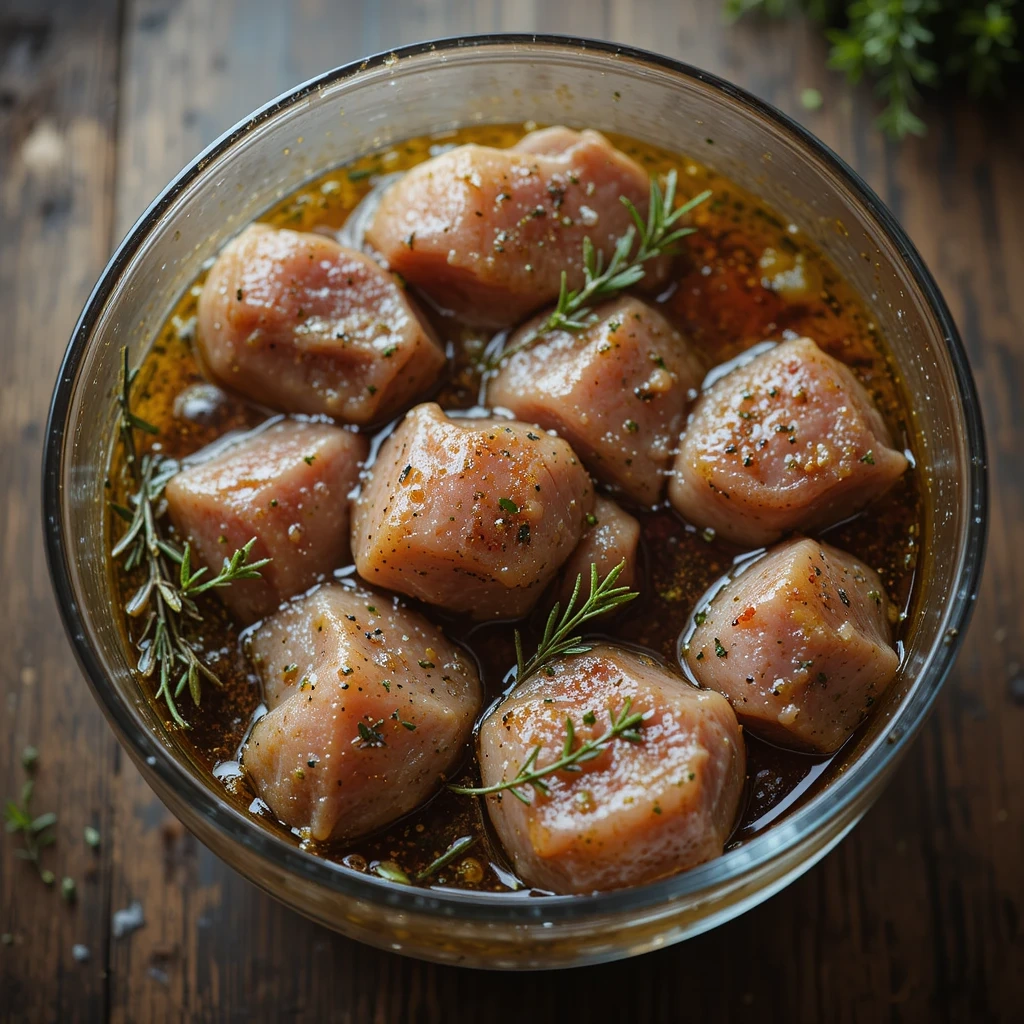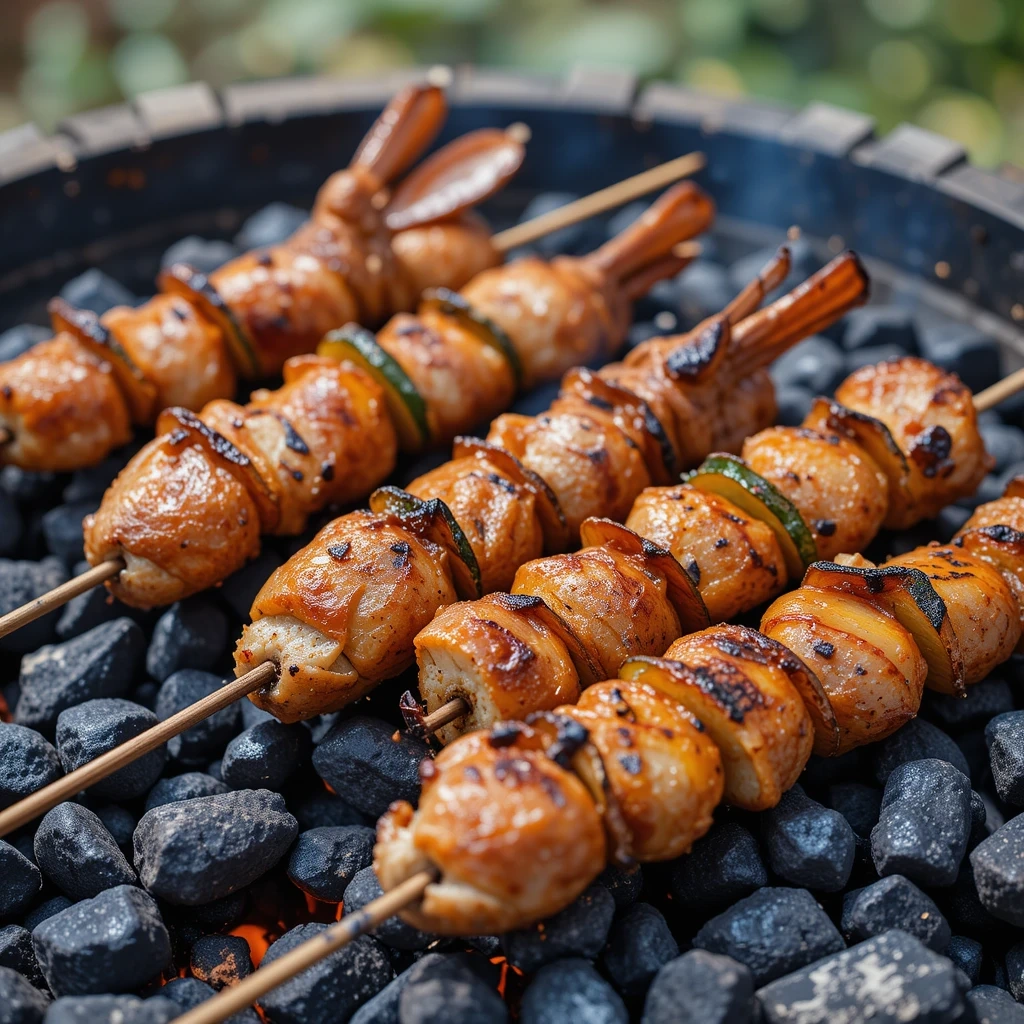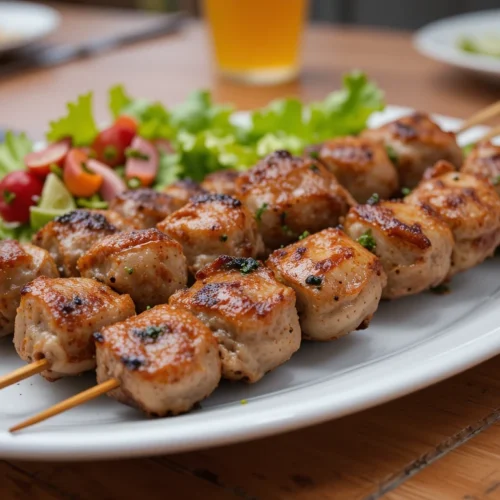Rabbit meat, a lean and flavorful protein, offers a delicious alternative to traditional meats. Selecting high-quality, fresh rabbit meat is crucial, with firmness, a pinkish tint, and a sweet fragrance being key indicators. Proper preparation, including rinsing and trimming, ensures optimal flavor and tenderness. Marinating in acidic mixtures with herbs and spices further enhances the taste. Whether roasted, braised, grilled, or pan-seared, rabbit meat’s versatility shines through. Using a meat thermometer to ensure an internal temperature of 160°F (71°C) guarantees safety. Experiment with complementary ingredients like bacon, mushrooms, and aromatic herbs to elevate the dish. Following food safety guidelines for storage and handling maintains quality and prevents spoilage, making rabbit meat a delightful and wholesome culinary experience.
When it comes to selecting rabbit meat, it’s essential to ensure that you are purchasing high-quality, fresh meat. Find rabbit meat that is firm to the touch, exhibits a pinkish tint, and has a gentle, sweet fragrance.. Avoid meat that appears discolored, has a strong odor, or feels slimy to the touch, as these are signs of spoilage.
Additionally, if you have the option, consider purchasing rabbit meat from a reputable butcher or supplier who can guarantee the meat’s freshness and quality. Furthermore, when selecting rabbit meat, it’s important to consider the specific cut you require for your recipe. Whether you’re looking for whole rabbits, saddle cuts, or specific portions, ensure that the meat is well-trimmed and free from any excess fat or connective tissue.
By carefully selecting the best rabbit meat, you can set the stage for a delicious and satisfying culinary experience.
Table of Contents
Preparing the Rabbit Meat for Cooking
Before diving into the cooking process, it’s crucial to properly prepare the rabbit meat. Start by rinsing the meat under cold water to remove any potential bone fragments or debris. Once cleaned, pat the meat dry with paper towels to ensure that it’s free from excess moisture, which can impede the browning process during cooking.
Additionally, if you’re working with whole rabbits, consider breaking them down into smaller, more manageable pieces for cooking. Furthermore, depending on your recipe and personal preferences, you may choose to remove the silver skin from the rabbit meat. This thin membrane can sometimes impart a slightly gamey flavor and toughen during cooking, so carefully trimming it off can enhance the overall texture and taste of the dish.
By taking the time to properly prepare the rabbit meat, you can ensure that it’s primed for optimal flavor and tenderness during the cooking process.
Marinating and Seasoning the Rabbit Meat
Marinating rabbit meat can infuse it with additional flavor and tenderness, making it a crucial step in preparing a delicious dish. Consider marinating the rabbit meat in a mixture of acidic ingredients such as vinegar, wine, or citrus juice, along with herbs, spices, and aromatics. This not only adds depth of flavor but also helps to tenderize the meat, particularly if you’re working with tougher cuts.
In addition to marinating, seasoning the rabbit meat just before cooking is essential for enhancing its natural flavors. Common seasonings for rabbit meat include salt, pepper, garlic, thyme, rosemary, and sage. However, feel free to experiment with different herbs and spices to create a unique flavor profile that complements your chosen cooking method.
By marinating and seasoning the rabbit meat thoughtfully, you can elevate its taste and texture to create a memorable dining experience.
Craving a hearty, homemade version of a classic comfort food? Veibrant Recipes offers a detailed guide on crafting the perfect Dinty Moore Beef Stew from scratch. This recipe features tender beef chuck, fresh vegetables like carrots, potatoes, and onions, all simmered in a rich, savory broth enhanced with tomato paste, Worcestershire sauce, and aromatic herbs. The article provides step-by-step instructions, cooking tips, and insights to help you achieve a stew with deep, comforting flavors and a perfect, fork-tender texture.veibrantrecipes.com

Cooking Methods for Rabbit Meat
| Cooking Method | Temperature | Time | Result |
|---|---|---|---|
| Grill at | medium-high temperature for | 10 to 15 minutes | to reach a tender and juicy texture. |
| Baking | 350°F (175°C) | 25-30 minutes | Moist and flavorful |
| Stewing | Low heat | 1-2 hours | Soft and succulent |
| Sautéing | Medium-high heat | 5-7 minutes | Tender and slightly crispy |
Rabbit meat lends itself well to a variety of cooking methods, each offering distinct flavors and textures. Popular cooking techniques for rabbit meat include roasting, braising, grilling, and pan-searing. Roasting whole rabbits or large cuts can result in tender, succulent meat with a beautifully caramelized exterior.
Braising smaller pieces of rabbit in flavorful liquid at low heat can yield moist and flavorful results. Grilling rabbit meat imparts a smoky charred flavor while preserving its natural tenderness. Pan-searing rabbit meat allows for quick cooking while developing a golden-brown crust.
Each method offers its own unique appeal and can be tailored to suit your preferences and the specific dish you’re preparing.

Checking for Doneness and Serving Suggestions
To ensure that rabbit meat is cooked to perfection, it’s crucial to check for doneness using a meat thermometer.Cooked rabbit should have an internal temperature of 160°F (71°C) to be considered safe for consumption. Additionally, when testing for doneness visually, the meat should appear opaque and no longer pink in the center.
Once cooked, rabbit meat can be served in various ways, from simple presentations such as grilled rabbit skewers or roasted rabbit with herbs to more elaborate dishes like rabbit stew or braised rabbit ragù. Pairing rabbit with complementary sides such as roasted vegetables, creamy polenta, or wild rice can further enhance the dining experience.

Tips for Enhancing the Flavor of Rabbit Meat
To enhance the flavor of rabbit meat, consider incorporating complementary ingredients such as bacon, mushrooms, onions, and aromatic herbs like thyme and rosemary into your recipes. These additions can impart richness and depth to the dish while balancing the natural flavors of the rabbit meat. Furthermore, experimenting with different cooking techniques and flavor profiles can help you discover new and exciting ways to enjoy rabbit meat.
Whether it’s incorporating Asian-inspired flavors in a stir-fry or infusing Mediterranean influences in a braised dish, exploring diverse culinary approaches can expand your appreciation for rabbit as a versatile protein.
Safety Precautions and Storage Tips for Rabbit Meat
When handling and storing rabbit meat, it’s important to adhere to food safety guidelines to prevent contamination and spoilage. Always store raw rabbit meat in the refrigerator at temperatures below 40°F (4°C) and use it within 1-2 days of purchase for optimal freshness. Additionally, when preparing rabbit meat, ensure that it reaches the recommended internal temperature of 160°F (71°C) to eliminate any harmful bacteria and pathogens.
Properly storing and handling rabbit meat is essential for maintaining its quality and safety for consumption. In conclusion, by following these simple steps for selecting, preparing, marinating, cooking, and serving rabbit meat, you can create delicious and satisfying dishes that showcase the unique flavors and versatility of this lean protein. Whether you’re a seasoned cook or new to preparing rabbit meat, these guidelines can help you achieve culinary success while enjoying the wholesome qualities of this often overlooked ingredient.
Explore the Rabbit Meat Collection at Fossil Farms, featuring a variety of all-natural, farm-raised rabbit products. Their rabbits are raised in free-roaming environments and fed a vegetarian diet of sweet alfalfa, oats, wheat, and barley, ensuring high-quality, sustainable meat. Options include whole fryers, boneless loins, hind legs, and gourmet sausages, all processed without added hormones or antibiotics. Rabbit meat is lean, tender, and has a mild flavor similar to chicken, making it a versatile choice for various culinary applications.Fossil Farms+1Fossil Farms+1Fossil Farms+1Fossil Farms+1Fossil Farms+1Fossil Farms+1
FAQs
What are the best ways to select high-quality rabbit meat?
When selecting rabbit meat, look for firm, pink flesh with no discoloration or strong odor. The meat should be well-packaged and stored at the proper temperature to ensure freshness. It’s also important to purchase rabbit meat from a reputable source to ensure quality and safety.
What are the essential steps for preparing rabbit meat for cooking?
Before cooking rabbit meat, it’s important to thoroughly clean and rinse the meat under cold water. Then, pat it dry with paper towels. Additionally, you may need to trim any excess fat or remove any organs if they were not already removed.
How can I marinate and season rabbit meat for optimal flavor?
Marinating rabbit meat can help enhance its flavor and tenderness. You can use a variety of marinades, such as citrus-based marinades or herb-infused marinades, to add flavor to the meat. Additionally, seasoning the rabbit meat with salt, pepper, and other herbs and spices can further enhance its taste.
What are the recommended cooking methods for rabbit meat?
Rabbit meat can be cooked using various methods, including grilling, roasting, braising, and stewing. Each method can result in delicious and tender rabbit meat, so it’s important to choose the method that best suits your preferences and the recipe you are following.
How can I check for doneness when cooking rabbit meat?
To ensure that rabbit meat is cooked to the proper doneness, use a meat thermometer to check the internal temperature. The USDA recommends cooking rabbit meat to an internal temperature of 160°F (71°C) to ensure that it is safe to eat.
What are some ways to boost the flavor of rabbit meat?
To enhance the flavor of rabbit meat, consider using flavorful marinades, herbs, and spices. Additionally, cooking rabbit meat with aromatic vegetables, such as onions, garlic, and herbs, can add depth of flavor to the dish.
What safety precautions should I take when handling and storing rabbit meat?
When handling rabbit meat, it’s important to follow proper food safety practices, such as washing your hands and utensils thoroughly after handling raw meat. Additionally, rabbit meat should be stored in the refrigerator at or below 40°F (4°C) to prevent bacterial growth.
What are the best storage tips for rabbit meat?
To ensure the freshness and quality of rabbit meat, it should be stored in the refrigerator and used within a few days of purchase. If you need to store rabbit meat for a longer period, consider freezing it in airtight containers or freezer bags to maintain its quality.

rabbit meat
Ingredients
- Lean and flavorful protein
- Versatile cooking methods
- Can be enhanced with various herbs and spices
- Offers a unique culinary experience
- Cons:
- Can be tough if not prepared properly
- Requires careful handling to avoid spoilage
- May have a slightly gamey flavor that some may not prefer
Instructions
- Selecting Rabbit Meat: Choose fresh, high-quality rabbit meat that is firm, pinkish, and has a sweet fragrance.
- Preparing the Rabbit Meat: Rinse under cold water, pat dry, and trim excess fat or silver skin.
- Marinating and Seasoning: Marinate in acidic mixtures with herbs and spices for at least 30 minutes. Season with salt, pepper, garlic, thyme, rosemary, or sage.
- Cooking Methods:
- Grilling: Grill at medium-high temperature for 10-15 minutes until tender and juicy.
- Baking: Bake at 350°F (175°C) for 25-30 minutes until moist and flavorful.
- Stewing: Stew on low heat for 1-2 hours until soft and succulent.
- Sautéing: Sauté on medium-high heat for 5-7 minutes until tender and slightly crispy.
- Checking for Doneness: Use a meat thermometer to ensure an internal temperature of 160°F (71°C). The meat should appear opaque.
- Serving Suggestions: Serve grilled rabbit skewers, roasted rabbit with herbs, rabbit stew, or braised rabbit ragù. Pair with roasted vegetables, creamy polenta, or wild rice.
- Enhancing Flavor: Incorporate bacon, mushrooms, onions, or aromatic herbs like thyme and rosemary.
- Safety Precautions and Storage: Store raw rabbit meat in the refrigerator below 40°F (4°C) and use it within 1-2 days. Ensure it reaches 160°F (71°C) when cooked.


1 thought on “5 Simple Steps to Prepare and Cook Rabbit Meat Perfectly”